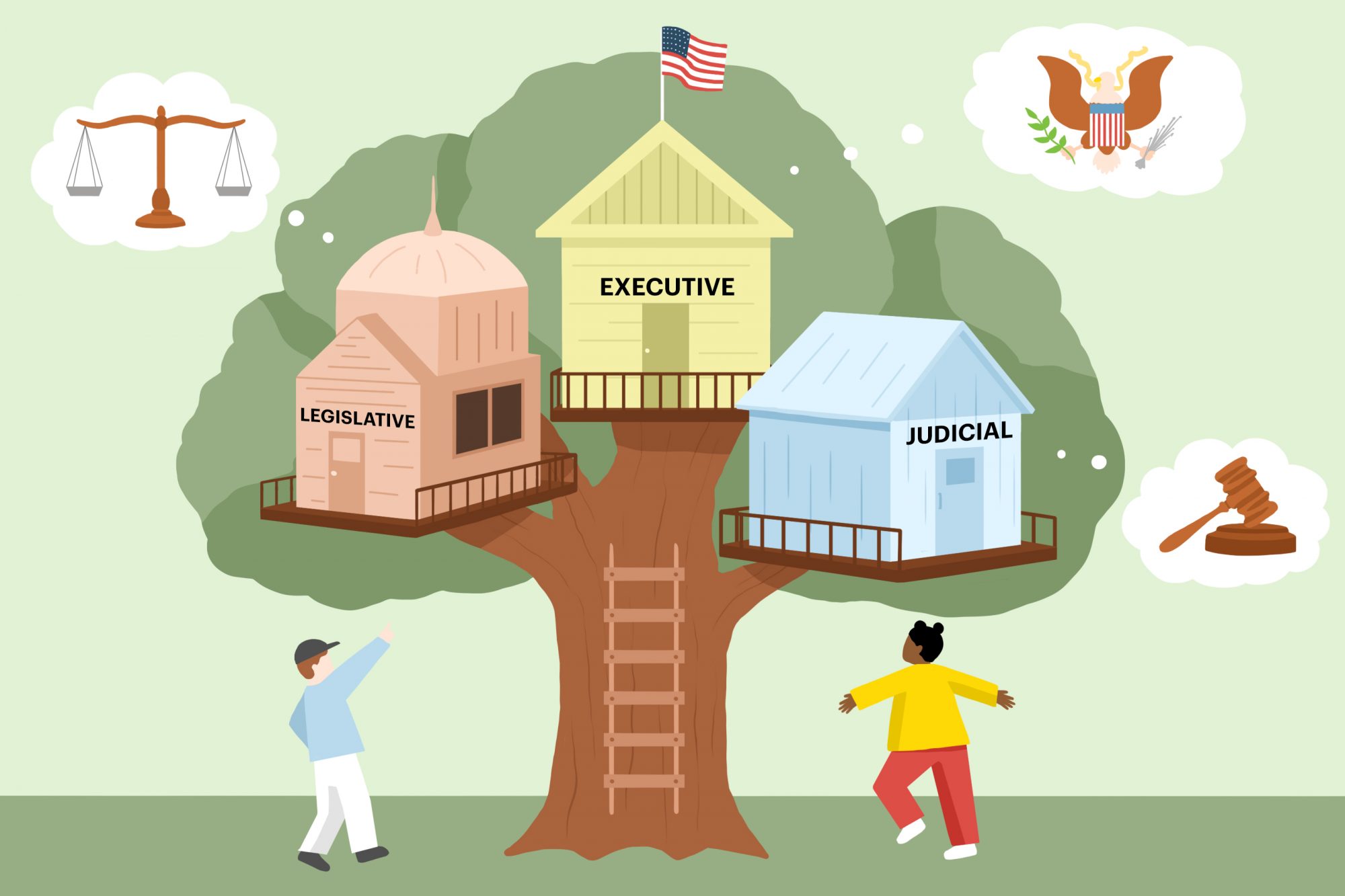The 2020 election is now history, and we are experiencing a transition of power to President-elect Joe Biden and Vice President-elect Kamala Harris. Besides taking office in January, they will be responsible for running the country and working with a new Congress to pass rules that help people.
The way the federal government works is complicated. If you get confused about what cases the Supreme Court hears, who implements Congress' rules, or how each branch of government works together, you are not alone.

I've spent more than 15 years as a political strategist-interviewing women like Hillary Clinton, Stacey Abrams, and Nancy Pelosi for my podcast Your Presidential Playlist. Right now, the podcast is tackling the three branches of government in bite sized policy interviews on Instagram with the women who will be making policy in the new administration. Based on these conversations and the hard-hitting political questions I get from my 2- and 4-year-old, I've broken down the branches of government.
What are the three branches of government?
The federal government, which runs the whole country, includes three different groups, or branches, that are separate but all have equal power. Each branch functions in a different way but together they are responsible for making, and implementing rules for the entire country.
The executive branch includes the President and a series of departments that are responsible for implementing the rules under the president. The president is elected by the entire country through the electoral college.
Next is the legislative branch, which is Congress. In Congress, there are two houses: the House of Representatives and the Senate. Congress has the power to make rules that affect the entire country, once they are agreed to-signed-by the President.
Finally there is the judicial branch, which includes courts. There are different levels of judges and courts, starting with District Courts and going all the way up to the Supreme Court. Judges are nominated by the president and then they are confirmed-voted on-by the Senate.
What stops one branch of government from being too powerful?
Two things keep any branch from being too powerful-"separation of powers" and "checks and balances." If the president, who is just one person, decides to make a rule, Congress can vote to override the President's rule and pass their own rule. The new rule from Congress will then become law. For the president, they have the power to decide whether or not to sign the rules that Congress passes. The judiciary branch has a check on the legislative and executive branches because they interpret the Constitution to make sure the Congress and the President have the power to make the rules they created. The check on the judicial branch is that the President appoints the judges and Congress can vote to impeach a federal judge and they can be removed from office.
Which branch of government makes the laws?
The executive branch and the legislative branch work together to make laws. When Congress passes a bill, the president has to sign it into law. After a law is passed, the executive branch does the day-to-day work executing it. The judicial branch does not make laws, they decide cases that are in front of them, and often the impact of their decision can create a new law or force a law to be revised.
Which branch of government enforces laws?
Both the executive branch and judicial branch have responsibilities for enforcing laws. In the Executive Branch, departments like the Department of Justice and the FBI are responsible for making sure the laws are followed. If someone makes a complaint, the judicial branch can decide if laws are being implemented the right way.
Which branch of government interprets laws?
The judicial branch sorts out arguments over laws. They'll decide if it's constitutional, and they'll decide how it should be applied. The ones who actually interpret the law and put it into practice are the executive branch, because they're the ones that have to execute it and make sure everything runs properly.
Does the president have all the power?
Although the president holds a lot of power, they don't have complete power. In order for something to become a law, Congress must vote on it before the President signs it into law. Congress can also override rules the president makes, and the judicial branch can decide if the president did not have the power to create the rule they made.
Who is in Congress, and what is the difference between the Senate and the House?
Each state, no matter how big or small they are, has two Senators. Since there are 50 states, there are 100 senators. In the House, each member is elected to represent a portion of the state. There are 435 members in the House, and the number of people from each state depends on the total number of people that live in that state. Members of the House keep their job for two years until they face another election, and members of the Senate stay in their job for six years until they have to get re-elected.
How do you get onto the Supreme Court?
First, you are nominated by the president. Then, the Senate, part of the legislative branch, votes on whether to give you the Supreme Court job. If the majority of the Senators vote for you, then you get to stay on the Supreme Court for the rest of your life!


